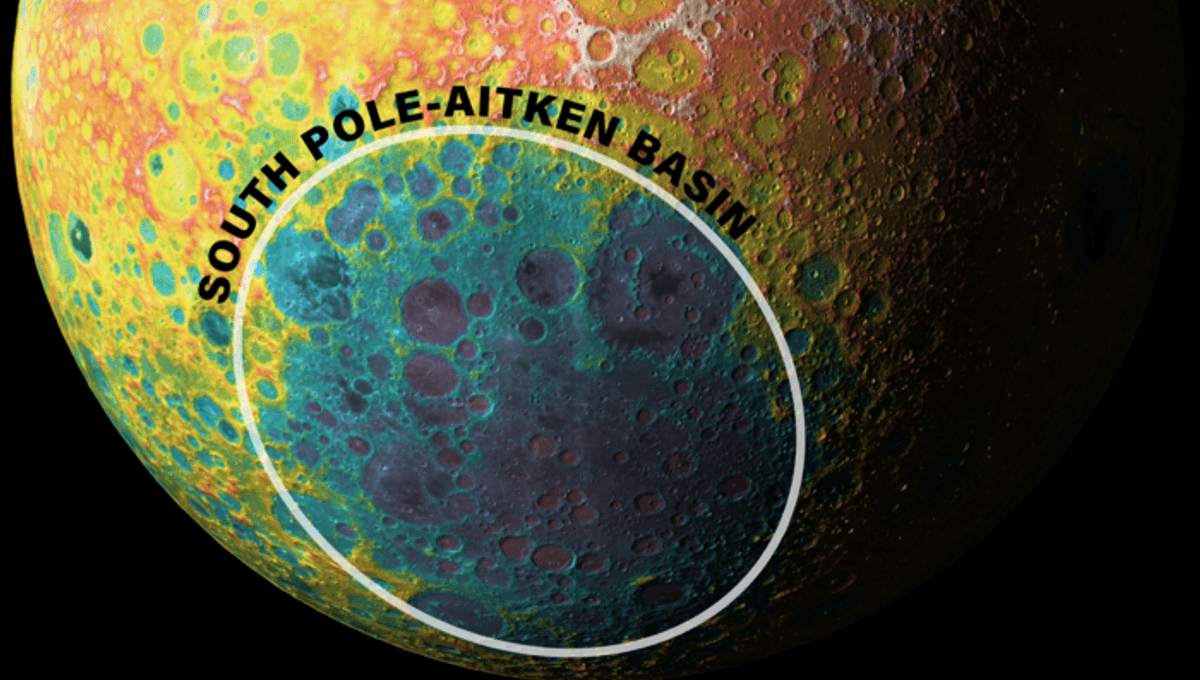
The Moon is believed to have become pretty solid pretty quickly after it formed 4.4 billion years ago. But that doesn’t mean that volcanism and magmatic events stopped there. By looking at rocks collected during the Apollo missions, researchers believe they have found evidence of a major magmatic event taking place about 100 million years after the Moon formed. The cause might have been the collision that created the largest known impact crater in the Solar System.
The team dated over 500 zircons from lunar samples and reported a peak in their age distribution at around 4.33 billion years. Zircons are formed from lunar magma solidifying and dating them provides insights into the chronology of the Moon. The high number of zircons from a time after the Moon should have solidified suggests that this might have been from an event.
More specific dating of some of these zircons suggests the event lasted about 4 million years, plus or minus half a million. It is possible that it was the final hurrah of the solidifying Moon – or maybe it was a period of intense asteroid strike. However, the team believes that the strongest evidence supports the idea that this event was caused by the impact that caused the South Pole-Aitken Basin.
Our findings also have interesting implications for the state of the early Solar System over 4.3 billion years ago.
Dr Melanie Barboni
“In our study, we found intriguing evidence for a major, potentially global magmatic event on the Moon 4.338 billion years ago. By precisely dating lunar zircon crystals from the Apollo missions, we discovered a striking concentration of zircon ages tightly clustered around 4.338 billion years,” co-lead author Dr Melanie Barboni, from Arizona State University, told IFLScience.
“Such a massive impact would have excavated lunar mantle material from great depths. We suggest the zircons we dated likely crystallized within the impact melt sheet as it cooled and differentiated. Subsequent impacts could have then distributed these zircons across the lunar surface.”
The zircons eventually made their way to the sites of Apollo 14, 15, and 17, even though the South Pole-Aitken Basin is on the far side of the Moon and far removed from where humans have visited so far. The crater is an area of massive interest for our understanding of the Moon’s past.
The impact might have caused such a major magmatic event and the object that caused it might have simply sunk and now remains buried underneath this region. There is a massive structure under it. If the zircons are confirmed to truly come from the South Pole-Aitken impact, they would allow us to precisely date the impact, with consequences for our understanding of the Moon and the whole Solar System.
“An impact of this scale would have also significantly influenced the development of the lunar crust and mantle. Our findings also have interesting implications for the state of the early Solar System over 4.3 billion years ago. An impact of this size hints at a still dynamic Solar System at this time, with large objects continuing to collide with planets and moons,” Dr Barboni explained.
If the Moon was getting hit by such objects, the Earth might not have been spared either. And while craters from that period have been erased by the eons of plate tectonics, having these insights might explain some of the properties of the Earth that remain today. Confirmation of this research might come sooner rather than later.
“Our research is particularly timely given the recent return of the first samples from the South Pole-Aitken basin by China’s Chang’e 6 mission. The combination of these new samples and our zircon age data could significantly advance our understanding of this major impact basin’s history and the broader impact history of the early Solar System,” Dr Barboni told IFLScience.
There is a lot of hope that Chang’e 6 might have found rocks from the actual lunar mantle. Such a find would be revolutionary, but even more, zircon would provide evidence for or against this work with all the important consequences listed here.
A paper describing the results is published in the journal Science Advances.
Source Link: Moon Experienced An Enormous “Magmatic Event” – Cataclysmic Impact Might Be To Blame